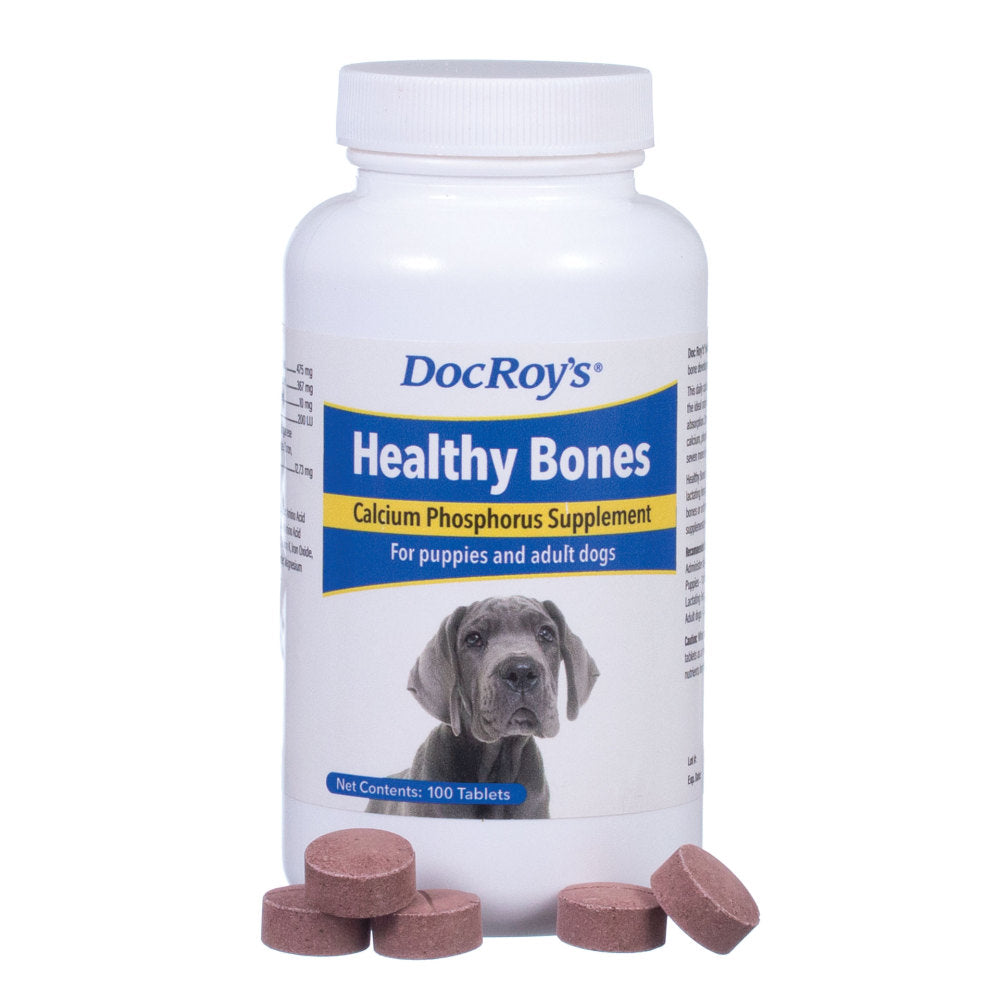How to Use Calcium During Whelping & Lactation
Let's Discuss Calcium during Whelping
In mammals such as dogs, calcium allows the uterine muscle to slide past and shorten, resulting in effective uterine contraction. Low blood calcium leads to ineffective contractions and nervousness, often resulting in puppy loss. Extremely low levels of calcium in the the bloodstream can cause eclampsia which can be fatal and is a medical emergency. If you supplement calcium before whelping, you shut down the pregnant dog’s ability to fine tune the minute-by-minute demand needed for whelping and milk production. By staying away from calcium supplements pre-whelping, you can let her gear up for the needs of whelping and lactation.
Should You Give a Whelping Dog Calcium?
Once active labor starts is is safe and helpful to start supplementing calcium. Fast-absorbing calcium like Breeder’s Edge® Oral Cal Plus Gel used several times during the birthing process helps keep blood calcium levels up. The pregnant dog will fine tune from the bone. Since she won’t be eating, a small amount of gel orally is the only choice. The newer research shows that it is safe to start with Oral calcium at the start of active labor rather than after the first puppy is born. Active labor is not Stage One. I personally prefer to wait until after the first puppy or active pushing. We also have Dogzymes Whelping Calcium Paste. Oral Cal contains 200mg calcium per ML and Dogzmes is 52mg Calcium per ml


Can You Give a Whelping Dog Too Much Calcium?
When dosing, consider the amount of calcium, form of calcium, as well as the magnesium, phosphorus and vitamin D3 levels in the supplement. A dose of 75-90mg elemantal calcium per pound of her pre pregnancy body weight is average. It should not be given all at once. For whelping it should be given between puppies and pauses and for nursing moms between her 3-4 meals. It is important to note that each bitch is unique to her calcium needs. Some bitches need calcium from whelping thru until weaning at 6 weeks. Others only need a few doses during whelping the first few days. I recommend letting your bitches behaviour determine how much and how often you give calcium. It is also important to note while you can go lower than 75 mg of elemental calcium per pound that 90 mg of elemental calcium per pound is the max safe dose.
Calcium After Whelping
Post-whelping, all high risk moms and heavy milkers should get calcium supplements until weaning. Calcium supplements for nursing dogs such as Breeder’s Edge® Oral Cal Plus Powder a great source of calcium for dogs after giving birth. Breeder’s Edge® Oral Cal Plus Powder has both calcium and phosphorus, which is needed for effective absorption. Giving only calcium actually decreases absorption. Calcium Supplementation is helpful for milk production. It also helps with excessive digging, aggression towards puppies, poor mothering skills and restless behaviours. These are all typically signs of low calcium in your dog.
Your Puppies First 48 Hours
Now that I have told you not to exceed 90 mg of elemental calcium per pound .... You can excedd this dose if your bitch is really struggling the first few days. After that, supplement her throughout the day as a preventative rather than waiting to react to problamatic behaviour seen with low calcium levels as discussed above.

How Much Calcium to Give a Nursing Dog
After all the puppies and placentas are delivered, you can change to the oral calcium powder or tablets to support her during lactation. Small females with large litters particularly need oral calcium supplementation to avoid eclampsia, a life-threatening medical condition. Calcium supplementation should be continued until puppy weaning.It is also important to note Calcium requires phosphorus work properly in the body along with Vitamin D. Please also see our chart below. NOTE These are suggestions and you should always consult a qualified veterinarian to choose the right product and dosing.
Here are some rough ranges for various weights:
- 5 lbs—375-450 mg elemental calcium
- 10 lbs—750-900 mg elemental calcium
- 20 lbs—1,500-1,800 mg elemental calcium
- 30 lbs—2,250-2,700 mg elemental calcium
- 40 lbs—3,000-3,600 mg elemental calcium
- 50 lbs—3,750-4,500 mg elemental calcium
- 60 lbs—4,500-5,400 mg elemental calcium
- 70lbs—5,250-6,300 mg elemental calcium
Again some dogs require less and some require more. It should never be given all at once and you should discuss with your vet. You also need to understand the different types of calcium.
What are the different Types of Calcium?
Breeder’s Edge® Oral Cal Plus Powder contains 500 mg of calcium and 200 IU of vitamin D3 per 5 gm. Calcium tablets have a highly varied amount of calcium, phosphorus, magnesium and Vitamin D3 so reading labels is necessary
Doc Roy’s® Healthy Bones tablets contain 475 mg calcium, 200 IU Vitamin D3, 367 mg of Phosphorous and 10 mg of Magnesium per tablet


We also offer Doc Roys Healthy Bones in a granules.
Overexuberant calcium supplementation can cause GI upset, vomiting and potentially constipation. Large tablets given to a small dog can cause tablets to adhere to one another and could cause an obstruction.
 If you have any further questions please call
If you have any further questions please call
The Breeders Cupboard Team @ 587-988-2406

